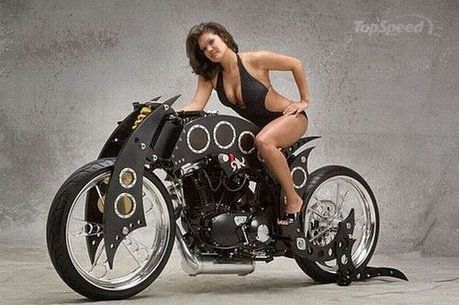 Igancio Sigrand, grandson of Roberto, sent a batch of photos from a visit with his grandmother, and what gems they are. A little back story; when I purchased 'Super Kim', the 1925 Zenith - J.A.P. supercharged 1,100cc racer, the machine came with a claimed history that Roberto Sigrand had purchased the machine from England in the late 1920's, and used it in solo and sidecar form to set several Argentine speed records, and that an attempt was made to take the absolute Motorcycle World Speed Record, but that no road was suitable for such an attempt in Argentina.
Igancio Sigrand, grandson of Roberto, sent a batch of photos from a visit with his grandmother, and what gems they are. A little back story; when I purchased 'Super Kim', the 1925 Zenith - J.A.P. supercharged 1,100cc racer, the machine came with a claimed history that Roberto Sigrand had purchased the machine from England in the late 1920's, and used it in solo and sidecar form to set several Argentine speed records, and that an attempt was made to take the absolute Motorcycle World Speed Record, but that no road was suitable for such an attempt in Argentina.Indulge me a moment on my soapbox: During my ownership of this machine, the lack of documentary evidence substantiating the story of 'Super Kim', many experts cast doubt her provenance, regardless that the Zenith in itself is a remarkable piece of workmanship, and clearly had been a competition machine. Given the history of the Zenith marque (that big twins were built for racing), it seemed obvious that 'Super Kim' must have had a long and interesting history, and there seemed no reason to doubt the story that a 'Roberto Sigrand' had raced the Zenith and taken national records. Due to prejudice, and ignorance of the rich competition history in South America, an 'aura of fraudulence' hangs around the historic vehicles unearthed from an entire continent, as documentation can be fraught with distance, time and language difficulties.
 It's clear that a major hole exists in the literature on South American motorcycling, which must be rectified, as even this single event in October 1930 illustrates what a rich vein of history is waiting to be told.
It's clear that a major hole exists in the literature on South American motorcycling, which must be rectified, as even this single event in October 1930 illustrates what a rich vein of history is waiting to be told.It's remarkable when any racing machine has a full history, yet the story of 'Super Kim' is slowly being filled. Sigrand began to race the Zenith by 1930, as can be seen in the top photo from the October 19, 1930 issue of Nazon. At this time, the motorcycle was normally aspirated by a twin-float Amac TT carb - so clearly the supercharger was added after 1930, when a second Amac TT carb with twin floats was installed, on a branched inlet manifold. There is also no 'Super Kim' logo (Sigrand's goggles are draped across the tank), but what appears to be the sans-serif block script 'Zenith' logo. The Harley-Davidson leading-link forks with a front brake are already present (these aren't Brough 'Castle' forks - the dual springs give them away as H-D) - given the lack of a truly long and straight road for a speed test, the brake must have been necessary. Harley forks with a front brake first appeared in 1928 on the 'J' series twins, so this front end certainly didn't come from Freddie Barnes' workshop in 1925/6 (Zenith competition machines used heavyweight Druid forks, typically). Perhaps there is a story behind the need for a new front end (crash damage?), or the need for brakes made the choice of the 'J' forks a natural choice for a large-capacity machine.

The second photo shows Sigrand running down the (dirt?) straightaway, the road to the town of Lujan according to the article, with his sidecar passenger crouched down (the top of his helmet just visible in the photo), although the Roberto is sitting upright, and thus must be at the end of his run. The sidecar is built in the 'Brooklands manner' - a platform with a curved wedge shape body, under which the enduring passenger would lay to keep out of the wind. Was the 'chair' with the machine when it arrived in Argentina? Or did Sigrand visit Brooklands to pick up the Zenith?
The third photo gives an overview of the track, again it's difficult to discern if the road is paved, and the quality of the photographs from this 78-year-old newspaper leaves many questions unanswered. There are certainly hundreds of spectators lining the course, extending into the distance, with one brave/foolish soul perched on the power lines... note the lack of any crowd control, and the proximity of spectators to the track. The Nazon newspaper mentions the event attracted 'much interest, and large numbers registered [to compete]'. Sigrand was the 'record-man in two categories; motorcycle, and sidecar.' So we must assume that the headline 'a speed of 'one hundred eighty-nine kilometers' (~114mph) refers to Sigrand's solo speed on the Zenith, which sounds plausible for a highly-tuned J.A.P. twin, running on alcohol.
 The next photo shows Antonio Gerli, 'who fought Sigrand' - obviously his 'chief' rival on the day. Gerli also raced Lancia [Lambda?] cars in Argentina; a reference to him can be found here; unfortunately, he was killed two months later (Dec. 28, 1930) when his racing sidecar outfit collided with a horse cart dawdling on the track. Gerli's chosen mount is an Indian, a tuned speed machine with dropped handlebars and bobbed exhausts. I'm going to stick my neck out here and suggest Gerli's machine is a 101 Scout or Sport Scout, the 750cc sidevalve model which was actually faster than the 1200cc Chief model (and the H-Ds of the day), and which, when well tuned, could run as fast as 110mph (according to Rollie Free in 'Flat Out'). The '101' was renowned for being an especially well-balanced machine, both in weight distribution and power/handling characteristics [and are still a favorite of Wall of Death riders for their forgiving stability], and would have been a worthy rival of the Zenith, in a way never seen at a venue such as Brooklands, where Indians vanished after 1925, due to a crippling import duty (100%) imposed on US motorcycles. Thus, due to protectionist economic policies meant to favor English manufacturers, the whole course of international motorcycle competition and development was skewed - but that's a subject for another post!
The next photo shows Antonio Gerli, 'who fought Sigrand' - obviously his 'chief' rival on the day. Gerli also raced Lancia [Lambda?] cars in Argentina; a reference to him can be found here; unfortunately, he was killed two months later (Dec. 28, 1930) when his racing sidecar outfit collided with a horse cart dawdling on the track. Gerli's chosen mount is an Indian, a tuned speed machine with dropped handlebars and bobbed exhausts. I'm going to stick my neck out here and suggest Gerli's machine is a 101 Scout or Sport Scout, the 750cc sidevalve model which was actually faster than the 1200cc Chief model (and the H-Ds of the day), and which, when well tuned, could run as fast as 110mph (according to Rollie Free in 'Flat Out'). The '101' was renowned for being an especially well-balanced machine, both in weight distribution and power/handling characteristics [and are still a favorite of Wall of Death riders for their forgiving stability], and would have been a worthy rival of the Zenith, in a way never seen at a venue such as Brooklands, where Indians vanished after 1925, due to a crippling import duty (100%) imposed on US motorcycles. Thus, due to protectionist economic policies meant to favor English manufacturers, the whole course of international motorcycle competition and development was skewed - but that's a subject for another post!
Other machines racing on that day included this Moto Guzzi, which looks like a ca. 1929 500SS model, with 4-valve overhead cam engine, a small oil tank atop the petrol tank, and Brampton-style forks with small check-springs at the front. I have other photos of early ohc 4-valve Guzzi racers in South America during this period (a C4V in Brazil).

In the 750cc class, Garcia Lamas raced this Harley '45' sidevalve twin with spartan sidecar arrangement, although his passenger looks happy enough!
Back to the Sigrand family; at the bottom is a photograph of Roberto's father, Camilo Sigrand, after having competed in the 1922 Bol d'Or 24-hour race in Paris, 'on a motorcycle of his own creation'. The tank says 'Sigrand Debladis' - Ignacio mentions that this was a motorcycle marque produced by his great grandfather in Argentina between 1908 and 1916, and is wondering if anyone has heard of this make?
The engine of the D-S in this photo is Harley, the forks look similar to a Henderson with a large central spring and short trailing link. For 1922, this is quite a substantial and powerful-looking motorcycle...
Camilo Sigrand was obviously a dedicated motorcyclist, keen enough to build his own machine and enter a prestigious event.
 Camilo emigrated to Argentina around 1908, and returned to France to study engineering, 'as no suitable education was available in Argentina'.
Camilo emigrated to Argentina around 1908, and returned to France to study engineering, 'as no suitable education was available in Argentina'.I'm wondering if the Sigrand family purchased the Zenith new from Freddie Barnes? Or at least, after it had run a few races in a prior owner's hands - at Brooklands or Montlhery?
Does anyone have access to pre-1925 copies of Moto Revue? I'd like to find out more about the elder Sigrand...








No comments:
Post a Comment